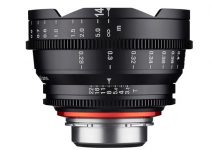Camera stabilization can be an expensive, yet indispensable addition to your filmmaking kit regardless of your level of ability or professional status. Depending on the camera you are using, it may even be a necessity for those cameras with extreme rolling shutter “jello” effect.
Sometimes, however, you find yourself in a situation where much-needed stabilization tools are left at home or weren’t available due to budgetary reasons. Before you hyperventilate and pass out from a panic attack (never a good look, especially on a professional shoot), remember that situations like these are prime opportunities for some good old-fashioned ingenuity and resourcefulness!
Ted Sims, filmmaker from Aputure, walks through six extremely resourceful stabilization hacks for you to use in a bind.
Hack #1: The Pseudo Slider
Using a small tripod (in this case a Gorillapod), cut the fingerlings (who knew that’s what they were called) off from a pair of gloves. Slide the cut fingerlings over the feet of the tripod to allow it to slide with ease over smooth, hard surfaces. This is a great hack but keep in mind to use consistant, constant speed when sliding the tripod over your chosen surface or the footage might look cheap and jerky.
Hack #2: The Twine Tripod
Don’t have your tripod with you but do have extra twine or string accessible to you? Great, it’s your lucky day! Tie the string around the areas where you would tie the camera straps of the camera, drop the remainder of the string down to the ground and step inside.
Pull the camera taught straight while standing on the rope. This technique is especially effective because of the four points of contact it offers: your two feet spread out, and two hands holding the camera, working together from the tension of the string.
Hack #3: The Noble Neck
While this may sound like a British horror story from the 1800s, it is actually a simple stabilization technique you can use if you have no access to string. Using your camera’s strap, sling it around the back of your neck while pushing the camera out from your body until the strap is taught. The tension from the strap and the three points of contact (your hands and neck) provide great stabilization in a pinch.
Hack #4: The Electric Elbow
If there is no string and your camera strap is nowhere to be found, it’s time to use your most indispensable piece of equipment: yourself. Create a ninety-degree angle with your arm and nestle your camera between your bicep and forearm.
Make sure you hold on tightly to your camera while filming. I hope it goes without saying that, despite its name, using the electric elbow technique is not an alternate power source for your camera.
Hack #5: Shoot in 4K
The image stabilization effect found in most video editing softwares tends to crop the recorded image to create smooth movement. Shooting in a resolution higher than your final deliverable gives your stabilization effect some wiggle room in terms of utilizing the excess resolution available to crop into the image without noticeable degradation upon final export and delivery (assuming you are delivering your video in HD).
Hack #6: Film your video in slow motion
If sound is not an issue in the shot, slow motion is a quick solution to stabilization issues. Filming in slow motion will smooth out small jitters and shakes and make your pivots and turn come across more fluidly.
While ideally, you would plan ahead before your shoot for any stabilization issues, if you run into an issue there are plenty of DIY hacks you can utilize that won’t set you back thousands of dollars with commonly available materials.
[source: Aputure]
Disclaimer: As an Amazon Associate partner and participant in B&H and Adorama Affiliate programmes, we earn a small comission from each purchase made through the affiliate links listed above at no additional cost to you.
Claim your copy of DAVINCI RESOLVE - SIMPLIFIED COURSE with 50% off! Get Instant Access!




